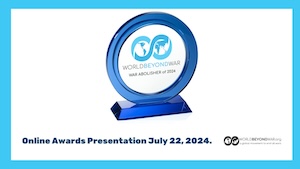
By Kristin Christman
What’s interesting about the Ferguson and NYC police incidents is that 60 years ago, any media coverage would likely have depicted the black victims as dangerous men and the police as clean-cut heroes, rescuing America from no-good degenerates. That would have been the topdog spin: The good guy has authority and power.
Now, although the police won in the judiciary, police have been assaulted and murdered as a social underdog current runs strong: The good guy lacks power and authority.
Yet both topdog and underdog biases obstruct one’s view of truth and unnecessarily amplify hatred and violence. The policeman sees the black youth as nothing but an obnoxious criminal. The black youth sees the policeman as nothing but an arrogant officer. Each bias prevents one from seeing goodness in the other.
60 years ago, would most Americans have even considered labeling the killings of blacks as excessive use of force? Or would their topdog view have rendered them morally incapable of imagining a black man’s point of view?
Consider the spin on international conflicts. Are we led to believe in the necessity of US killing to rescue us from dangerous degenerates? Are we capable of recognizing US invasions, night raids, depleted uranium, white phosphorus, and torture as excessive force when we see it? Is there no sense of wrong done to thousands killed and millions displaced by US invasions? Or do we readily assume the topdog spin that the US is the good policeman?
And do terrorists, as underdogs, assume killing topdog nation civilians is valid? Did Al Qaeda view those killed on 9/11 merely as targetable possessions of a topdog nation? Did each individual not have a right to live?
What enabled US guards to torture prisoners at Guantanamo and black sites? What enabled Nazis to send Jews to the gas chambers, US pilots to firebomb German civilian populations, the Pilgrims’ children to enslave Native Americans, or Queen Elizabeth to hang the Irish?
What enabled KKK members to lynch blacks and Europeans to burn alleged witches? What enables some to beat their wives and children, ISIS to massacre villages, and the US to bomb and sanction nations?
When you read about those who kill and injure, you often see a common factor surfacing: an honest-to-goodness conviction that their victims belong to a category of people who are inferior, unreasonable, dangerous, or evil and that one’s own use of force is for the best – even holy. Sometimes you find a mechanical belief that one is being good by obeying orders, even if orders are cruel.
Fairy tales convince us that evil people recognize their thoughts as evil. Therefore, if we feel good, we are good. But actually, those who perform evil often have clean consciences and feel they are upright human beings. That is how good people are corrupted to perform evil: their minds view other’s violence as evil and their own violence as good.
To prevent slipping under the control of an uninformed conscience, whenever one feels convinced that another is so despicable as to merit attack, be it a black lawbreaker, police officer, Muslim militant, or American journalist, take it as a warning sign that one may not have grasped the full picture. Recognize that one’s conscience is no longer reliable at this point; it’s giving one a moral feeling of goodness, while simultaneously encouraging one to take aim and fire.
Go back to 1979 when Iranians took Americans hostage. I don’t recall hearing that Iranian wrath stemmed from the CIA’s toppling of Iran’s Prime Minister Mossadegh, reinstallation of the despised Shah, and training of his brutal force SAVAK. Do you? I remember TV footage displaying angry Iranians burning US flags. We saw the worst, the drama, not the reasons, not the full picture.
Now we’re given more images of enraged Mid-Easterners; we see heinous, sickening crimes of ISIS atrocities. But are we shown the full picture?
The danger of the incomplete picture is that if we focus solely on an opponent’s evil, we lose sight of positive common ground and more readily spring to a violent response. Like Odysseus and Sinbad, we kill the Cyclops, cut off the witch’s head, destroy the serpent, and congratulate ourselves – without ever questioning whether our actions were wicked.
Sometimes people seem filled with dry kindling, ready to ignite into fury upon perceiving a bad guy: Some eagerly execute a Christian for blasphemy in Pakistan, torment a classmate for breaking a rule, or torture prisoners under US guard. Why so eager? Why the hunger for a target?
Perhaps the target of one’s rage serves as an outlet for negativity inside, the hatred, anger, and fear that can exist internally even without external irritations. Because of internal negativity, we may respond with excessive force and hatred toward our targets: terrorist, policeman, law-breaker, child.
But when we react with excessive force, we are allowing the negative in us to engage with the negative in them; we are placing negativity in the driver’s seat and giving it the reins of power.
Why not catch the good and let the positive in us engage with the positive in them?
Kristin Y. Christman is author of The Taxonomy of Peace: A Comprehensive Classification of the Roots and Escalators of Violence and 650 Solutions for Peace, an independently created project begun the September of 9/11 and located online. She is a homeschooling mother with degrees from Dartmouth College, Brown University, and the University at Albany in Russian and public administration. http://sites.google.com/site/paradigmforpeace








